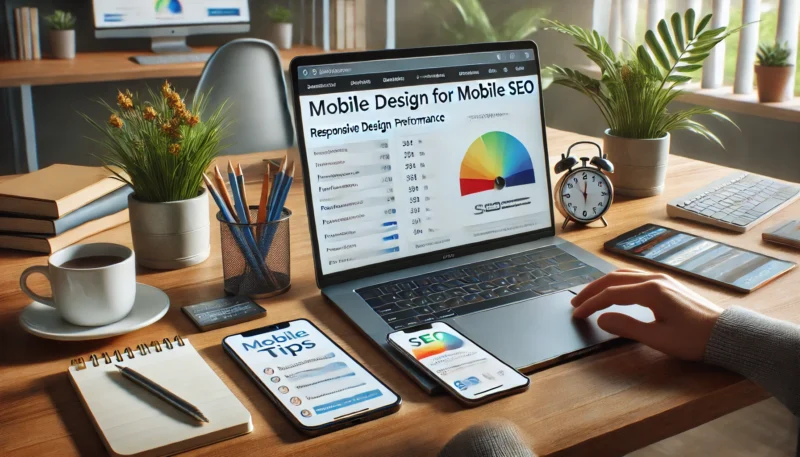With more than 60% of all Google searches coming from mobile devices, mobile SEO is no longer optional — it’s critical. In 2025, Google continues to prioritize mobile-first indexing, meaning your site’s mobile version is the primary version used for ranking and indexing.
If your website doesn’t perform well on smartphones and tablets, your visibility, rankings, and user engagement are all at risk.
In this guide, we’ll walk through the most important strategies to optimize your site for mobile SEO and deliver the best experience to users — and search engines.
What Is Mobile SEO?
Mobile SEO is the process of optimizing your website for mobile devices to ensure it functions smoothly and ranks well in mobile search results. This includes technical performance, usability, speed, and content design.
Since Google switched to mobile-first indexing, the mobile version of your site — not the desktop — determines how your site ranks across all devices.
Why Mobile Optimization Matters in 2025
-
Mobile-first indexing is standard: Google uses the mobile version for crawling and indexing your site
-
Mobile traffic dominates: Most users browse, shop, and consume content on phones
-
User experience (UX) affects bounce rates and conversions
-
Core Web Vitals now heavily influence rankings — especially on mobile
How to Know If Your Site Is Mobile-Friendly
Start with these tools:
-
Google’s Mobile-Friendly Test
-
PageSpeed Insights (Mobile tab)
-
Search Console > Mobile Usability report
-
Manual testing on various devices and screen sizes
Look for issues like:
-
Text too small
-
Clickable elements too close together
-
Content wider than screen
-
Slow load times
-
Unusable navigation menus
Key Mobile SEO Optimization Tips
1. Use Responsive Design
A responsive website adapts to the screen size of the device being used. This ensures content, images, and layout look good and function properly on phones, tablets, and desktops.
✅ Avoid using separate mobile subdomains like m.example.com — this creates duplication and indexing issues.
2. Prioritize Mobile Page Speed
Mobile users are impatient. Your site should load in under 3 seconds — ideally faster.
How to Improve Speed:
-
Compress images (use WebP or TinyPNG)
-
Minify CSS, JavaScript, and HTML
-
Enable lazy loading
-
Use browser caching and a CDN
-
Reduce server response time
✅ Test with PageSpeed Insights (Mobile) and implement its suggestions.
3. Optimize for Core Web Vitals (Mobile)
These metrics are part of Google’s ranking algorithm:
-
LCP (Largest Contentful Paint): Time to load main content (goal: <2.5s)
-
FID (First Input Delay): Time to interact (goal: <100ms)
-
CLS (Cumulative Layout Shift): Visual stability (goal: <0.1)
✅ Mobile issues with these vitals will directly impact rankings.
4. Improve Mobile Navigation
Mobile screens require simplified, intuitive navigation:
-
Use a sticky navigation bar or hamburger menu
-
Make buttons large enough to tap easily
-
Avoid dropdowns or complex nested menus
-
Use internal linking to guide users naturally
✅ Test your mobile navigation with real users for feedback.
5. Avoid Intrusive Pop-ups
Pop-ups that cover content, especially on mobile, create a bad user experience and can trigger ranking penalties.
✅ Use gentle banners or slide-ins
✅ Delay pop-ups until after user engagement
🚫 Don’t block main content immediately on load
6. Use Readable Font Sizes and Layouts
Ensure:
-
Font size is at least 16px
-
Text doesn’t require zooming or side-scrolling
-
Line height is spacious
-
Paragraphs are short and easy to skim
✅ Good typography = better UX and SEO.
7. Optimize Content for Mobile Users
Mobile users skim and scroll. Structure your content accordingly:
-
Use short paragraphs
-
Use H2 and H3 subheadings
-
Add bullet points and numbered lists
-
Include clear CTAs (buttons, not just links)
✅ Focus on clarity, scannability, and quick wins.
8. Eliminate Unused or Heavy Scripts
Many plugins and tracking scripts can slow down your site significantly — especially on mobile connections.
✅ Audit scripts with tools like GTmetrix or Chrome DevTools
✅ Defer or remove non-essential scripts (e.g., old tracking pixels)
9. Use AMP (Accelerated Mobile Pages) If Necessary
AMP is a Google-backed framework that makes pages load instantly on mobile. While not required for ranking, AMP can improve speed and visibility — especially for news or blog-heavy websites.
✅ Not mandatory, but useful for content sites with frequent publishing
10. Optimize for Voice Search (Optional)
Mobile users often search using voice. To prepare for this:
-
Use natural, conversational language
-
Target long-tail keywords
-
Answer specific questions clearly (good for featured snippets)
✅ Example: “How do I optimize my website for mobile SEO?”
Final Thoughts: Mobile SEO Is User Experience SEO
If you want to succeed in search today, your mobile experience must be fast, clean, intuitive, and helpful. It’s not about cramming content onto a small screen — it’s about designing for how users actually interact on mobile.
Take time to audit and improve your mobile site today. A better mobile experience means higher rankings, lower bounce rates, and happier visitors.

